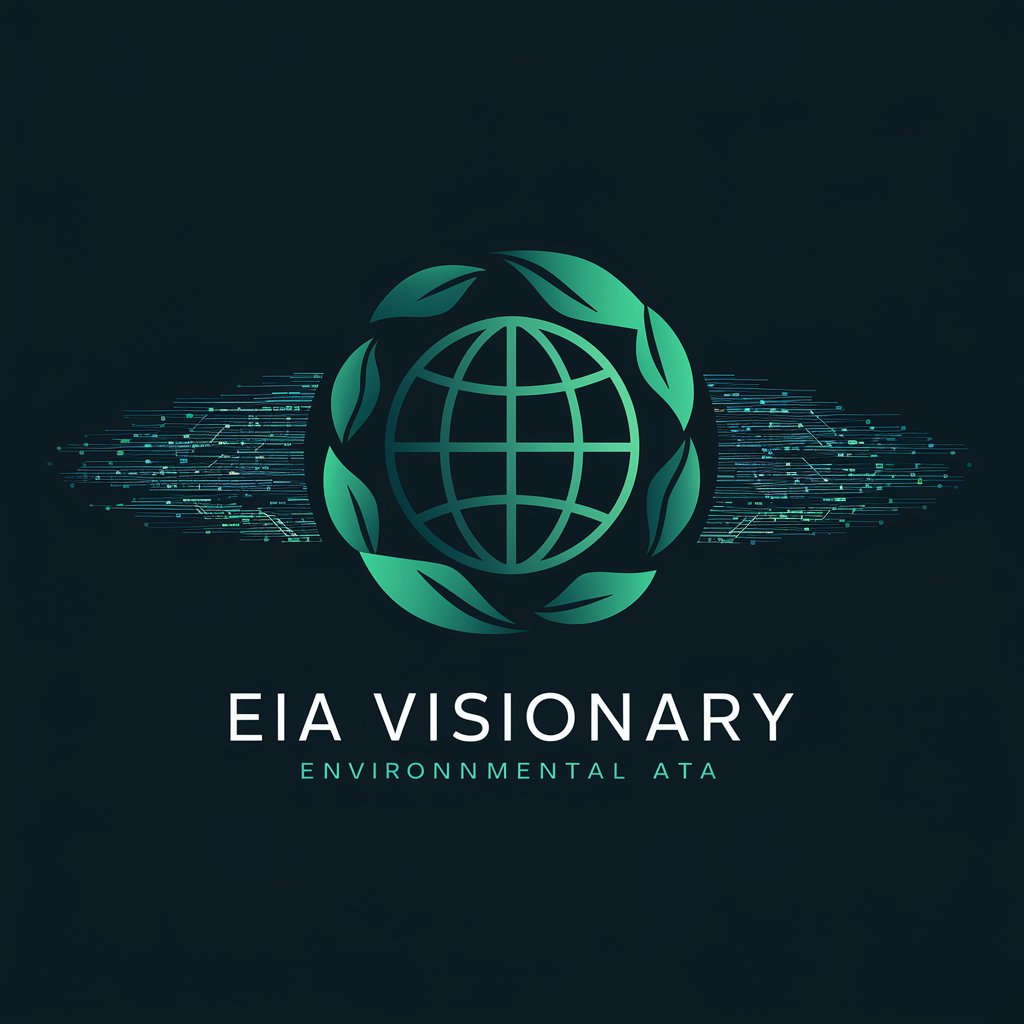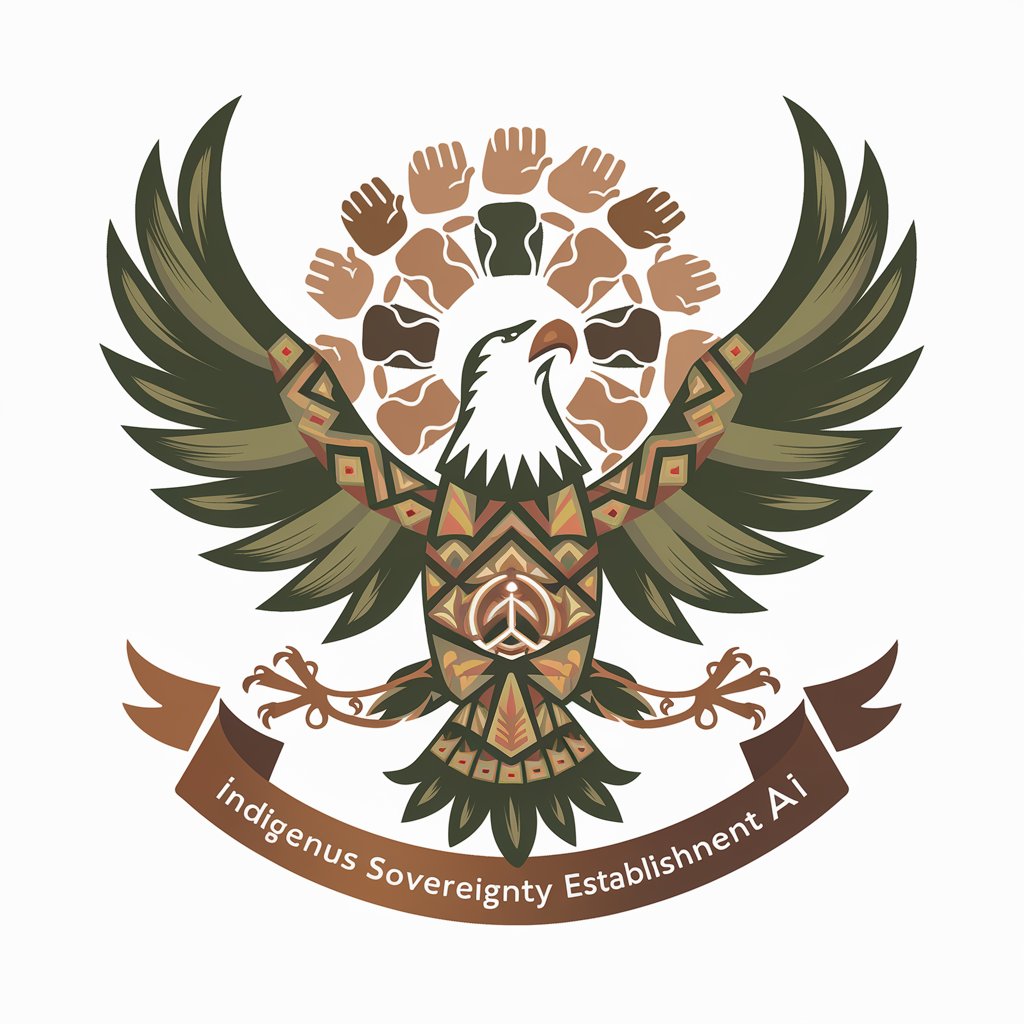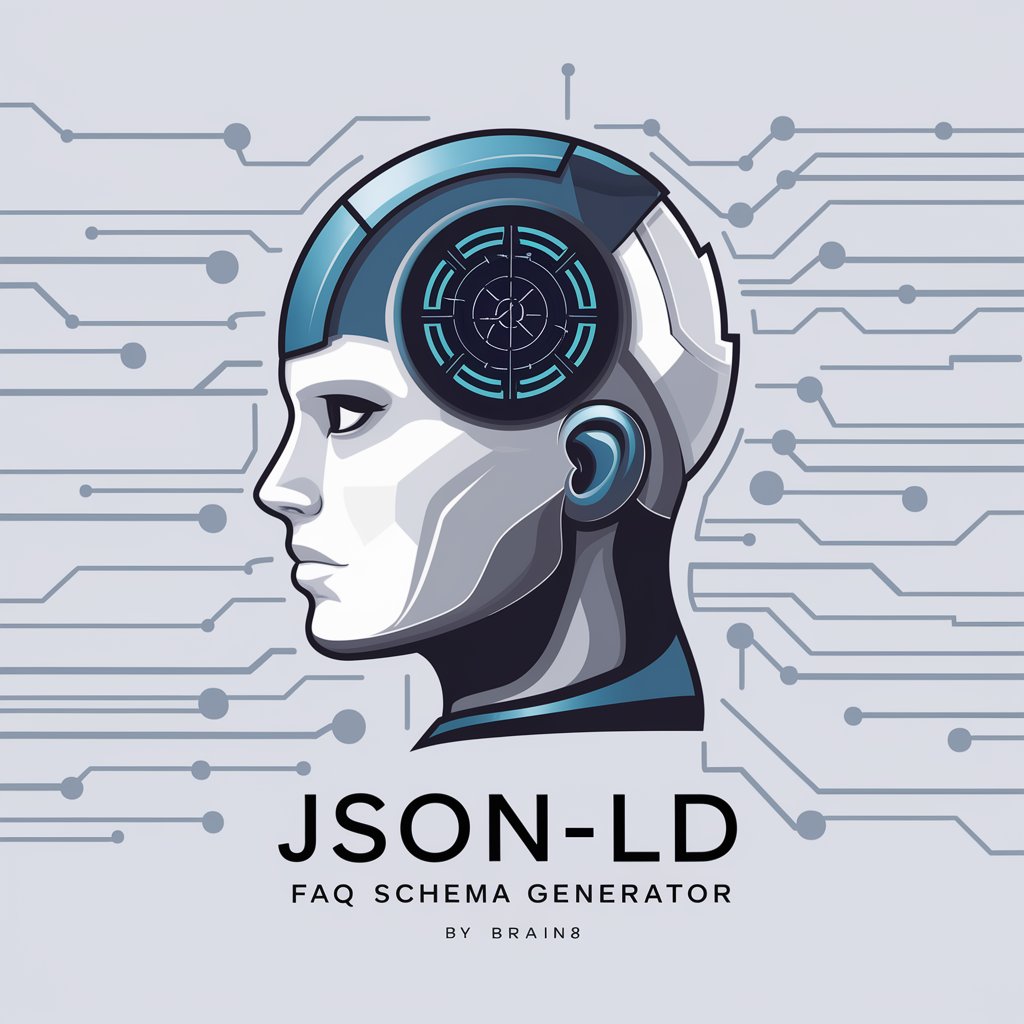
EIA Visionary - Environmental Impact Analysis

Welcome to EIA Visionary, your premier AI for Environmental Impact Assessments.
Empowering sustainable decisions with AI
Evaluate the environmental impact of...
Generate a comprehensive EIA report for...
Analyze the potential consequences of...
Assess the cumulative effects of...
Get Embed Code
Introduction to EIA Visionary
EIA Visionary stands as a cutting-edge tool specifically engineered for conducting Environmental Impact Assessments (EIAs) with unparalleled efficiency and accuracy. It's designed to serve as a comprehensive solution for evaluating the potential environmental impacts associated with proposed projects or developments. By integrating sophisticated data analysis capabilities, advanced mapping, and dynamic visualization, EIA Visionary facilitates an all-encompassing assessment process. It is adept at predicting environmental consequences, evaluating mitigation strategies, and assessing cumulative effects with precision. For example, when assessing the impact of a new infrastructure project, EIA Visionary can process vast datasets to model potential impacts on local wildlife, water quality, and air pollution levels. It then visualizes these impacts through detailed maps and charts, making it easier for stakeholders to understand and make informed decisions. Powered by ChatGPT-4o。

Main Functions of EIA Visionary
Predictive Analysis of Environmental Consequences
Example
Using AI and machine learning algorithms to forecast the impact of urban development on local ecosystems.
Scenario
In planning a new suburban expansion, EIA Visionary analyses habitat fragmentation risks, predicts changes in biodiversity, and identifies mitigation strategies to preserve local wildlife.
Evaluation of Mitigation Strategies
Example
Comparing the effectiveness of different pollution control technologies in an industrial setting.
Scenario
For a proposed chemical plant, EIA Visionary assesses various air and water pollution control technologies, modeling their effectiveness in reducing emissions and ensuring compliance with environmental standards.
Assessment of Cumulative Effects
Example
Analyzing the combined environmental impacts of multiple projects in a region over time.
Scenario
EIA Visionary is used to evaluate the cumulative environmental impact of several mining projects in a sensitive watershed area, considering factors like water consumption, pollution, and habitat disruption.
Advanced Mapping and Visualization
Example
Creating interactive maps that highlight areas of potential environmental sensitivity or risk.
Scenario
When a wind farm is proposed, EIA Visionary generates detailed maps showing bird migration paths and nesting sites to guide turbine placement and minimize wildlife disruption.
Ideal Users of EIA Visionary Services
Environmental Consultants and Agencies
Professionals and organizations responsible for conducting EIAs benefit from EIA Visionary's comprehensive data processing and analysis capabilities. It streamlines the assessment process, ensuring thorough and accurate evaluations of environmental impacts and mitigation strategies.
Urban Planners and Developers
This group benefits from using EIA Visionary to predict and mitigate potential environmental impacts of development projects. The tool's advanced mapping and predictive analytics support sustainable urban development and help in complying with environmental regulations.
Government Regulatory Bodies
Regulatory authorities use EIA Visionary to review and verify the environmental impact assessments submitted for proposed projects. Its advanced capabilities enable more efficient and effective regulatory oversight, ensuring projects meet environmental standards.
Non-Governmental Organizations (NGOs) and Environmental Advocacy Groups
NGOs involved in environmental protection use EIA Visionary to analyze and critique development projects, leveraging its detailed environmental impact predictions to advocate for sustainable practices and policies.

Using EIA Visionary: A Step-by-Step Guide
1
Begin by accessing yeschat.ai for an introductory experience without the need for login or subscribing to ChatGPT Plus.
2
Select the EIA Visionary option from the available services to start your environmental impact assessment process.
3
Provide detailed project information, including location, scale, and potential environmental impacts, to tailor the analysis.
4
Utilize the tool’s advanced features for data analysis, mapping, and visualization to explore environmental consequences and mitigation strategies.
5
Review and interpret the generated reports and visual presentations for decision-making, ensuring to leverage the tool for stakeholder engagement and project alternative generation.
Try other advanced and practical GPTs
Empowerment Ally
Empowering Brands with AI Insight

Business Deal Negotiator
Empowering Negotiations with AI Insight

Indigenous Sovereignty Establishment AI
Empowering Indigenous Voices with AI

Product Feed GPT
Elevate Your E-commerce with AI

Potential Client Analyzer
AI-powered Client Insight Discovery

JSON-LD FAQ Schema Generator | Brain8
Elevate SEO with AI-powered FAQ Schemas

Word Weaver
Crafting Stories, Expanding Vocabulary

Clemi
Empowering Decisions with AI and Blockchain

Artful Midjourney Guide
Empowering Your Creative Journey with AI

Industry Guru
Empowering fastener industry decisions with AI

Alt Text Generator
Enhancing Accessibility and SEO with AI

My Writing Coach For Medium
Elevate Your Writing with AI-Powered Insights

Frequently Asked Questions about EIA Visionary
What makes EIA Visionary unique in conducting environmental impact assessments?
EIA Visionary stands out for its comprehensive data analysis capabilities, including advanced mapping and dynamic visualization, allowing for detailed assessments, prediction of environmental consequences, and evaluation of mitigation strategies with precision.
Can EIA Visionary be used for projects in any geographic location?
Yes, its remarkable adaptability to diverse projects and environments ensures it can conduct environmental impact assessments for projects located anywhere in the world.
How does EIA Visionary support stakeholder engagement?
It generates detailed reports and captivating visual presentations, facilitating robust stakeholder engagement by making intricate data accessible and comprehensible to varied audiences.
What project types can benefit from using EIA Visionary?
EIA Visionary is suited for a wide range of projects, from infrastructure and development projects to conservation efforts, thanks to its exhaustive knowledge base and adaptability.
How does EIA Visionary ensure compliance with environmental regulations?
Constant updates with cutting-edge EIA practices and regulations guarantee that assessments are conducted in line with the latest environmental standards and legal requirements.